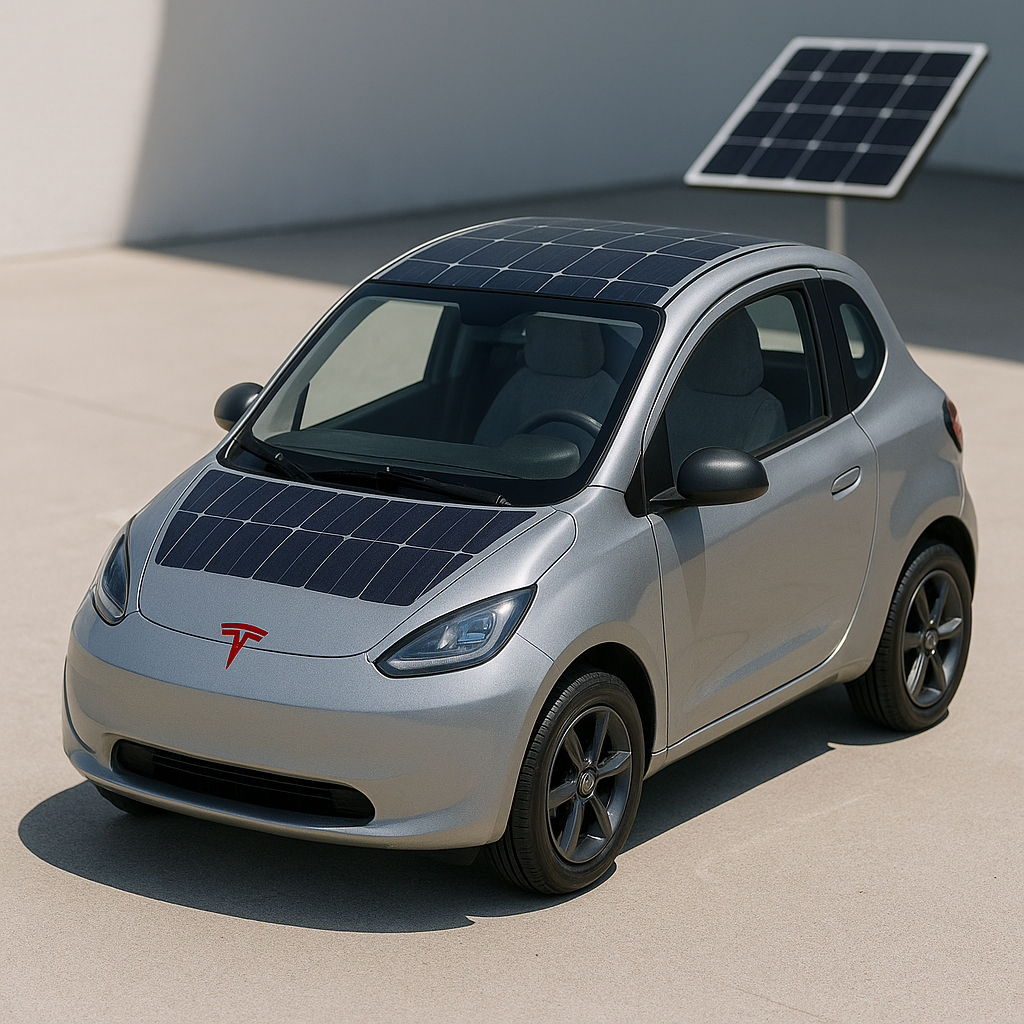Let’s face it: Tesla is entering a challenging chapter. Competition from Chinese EV makers like BYD, NIO, and XPeng is ramping up quickly. And while Tesla’s higher price tag plays a role, the real concern runs deeper: a growing sense that Tesla’s innovation engine is stalling.
Much like the iPhone in its later generations, Tesla’s vehicle lineup is starting to feel… familiar. The designs are sleek but predictable. The Model S, 3, X, and Y follow a template that’s beginning to show its age. Sure, the Cybertruck broke the mold—but it’s a niche product with limited mainstream appeal.
The Solution Tesla Needs Has Been Hiding in Plain Sight
Ironically, Tesla doesn’t need a complete reinvention to regain its edge. The answer has been in front of us for years: a truly practical, self-charging solar electric vehicle.
Startups like Sono Motors, Lightyear, and Aptera have been chasing this dream—creating roadworthy, highway-capable solar EVs that can generate meaningful range from sunlight alone. Each brought something exciting to the table: clever solar integration, groundbreaking battery tech, and hyper-efficient aerodynamics.
But all hit the same wall: money and scalability. Either they couldn’t raise enough capital or they couldn’t bring production costs down far enough for mass adoption.
This is where Tesla stands apart.
Why Tesla Is Uniquely Positioned to Win This Race
From an engineering perspective, Tesla already holds most of the cards. Its powertrain technology—batteries, motors, and software—is among the most integrated and efficient in the industry. Tesla’s vehicles are lightweight, aerodynamically optimized, and built with manufacturing scale in mind.
In fact, the Model 3 and Model S boast some of the lowest drag coefficients of any production cars on the road (as low as 0.219 Cd). This isn’t just a design brag—it’s a crucial factor in making solar energy a viable contributor to vehicle range.
Then there’s Tesla’s underappreciated solar advantage.
Since its 2016 acquisition of SolarCity, Tesla has quietly built a wealth of expertise in solar technology and energy storage. From rooftop panels and solar roof tiles to its Powerwall home battery systems, Tesla has proven experience in capturing and storing solar energy—experience no other automaker can match.
Tesla even flirted with vehicle-mounted solar once before. At the Cybertruck reveal, Elon Musk promised an optional solar tonneau cover capable of adding up to 15 miles of range per day—possibly 30 miles with a larger array. The option never materialized, but fan interest was loud and clear.
Financial Firepower Others Can Only Dream Of
While Lightyear and Aptera scrambled for funding and ultimately struggled to survive, Tesla has no such limitation. With a market capitalization hovering near a trillion dollars, Tesla can afford the R&D and manufacturing scale needed to build what others only dreamed of: a mass-produced, solar-assisted EV at an accessible price point.
For the Skeptics: The Solar Car Concept Already Works
If you’re doubtful that solar cars can be practical, real-world examples say otherwise.
- In 2022, the Sunswift 7, a solar race car built by Australian university students, set a Guinness World Record by driving 1,000 kilometers (about 621 miles) in under 12 hours—powered entirely by the sun, with no plug-in charging.
- In October 2023, Stella Terra, another solar-integrated vehicle, completed a grueling 1,000 km off-road trip through Morocco and the Sahara—again, powered solely by sunlight.
At the other end of the spectrum, there’s the Squad Solar City Car, a small urban EV equipped with rooftop solar panels providing up to 12 miles of range per day. Its 28-mph top speed makes it impractical for highways, but it proves the concept works for urban use.
Tesla’s Opportunity: Split the Difference and Lead Again
Tesla has a unique chance to bridge this gap.
Imagine a compact, lightweight, aerodynamic commuter car built for one or two people. Solar-equipped, highway-capable, and designed to offset the average urban commute with daily solar range—without needing a plug for most short trips.
It wouldn’t replace the Model 3 or Model Y. It would complement them—a new category of affordable, solar-assisted electric transport for the masses.
With its solar expertise, engineering leadership, production scale, and financial muscle, Tesla is the only company in the world truly positioned to pull this off.
If Tesla gets this right, it won’t just respond to growing competition—it will make that competition irrelevant.
